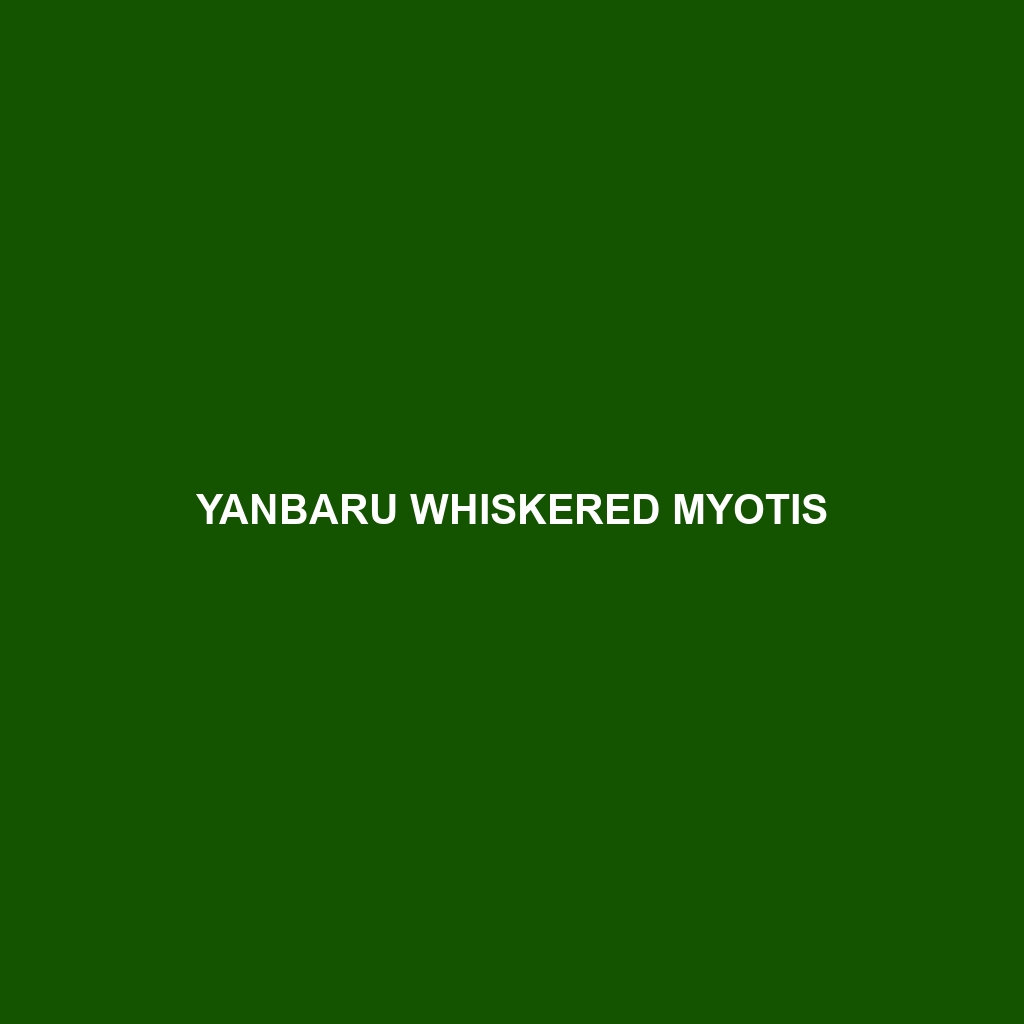Yanbaru Whiskered Myotis
Common Name: Yanbaru Whiskered Myotis
Scientific Name: Myotis yanburaensis
Habitat
The Yanbaru Whiskered Myotis is primarily found in the Yanbaru region of Okinawa, Japan. This unique species thrives in subtropical forests and limestone cave systems, benefiting from the lush vegetation and diverse microhabitats that characterize these areas. The dense canopy and humidity of the forest floor provide ideal roosting sites and foraging opportunities for this bat.
Physical Characteristics
The Yanbaru Whiskered Myotis is a small bat, typically measuring around 8-10 cm in body length with a wingspan of approximately 27-30 cm. Its fur is dark brown to gray, with lighter underparts, which provide excellent camouflage against the forest environment. Notable features include long, pointed ears and distinctive facial markings that differentiate it from other bat species in the region. The combination of its size, coloration, and unique fur texture make it an intriguing subject for wildlife enthusiasts.
Behavior
The behavior of the Yanbaru Whiskered Myotis is characterized by nocturnal activity, with peak foraging hours occurring shortly after sunset. These bats are known for their agile flight patterns as they navigate through dense foliage and capture insects mid-air. Socially, they exhibit gregarious tendencies, often roosting in small groups within caves or tree hollows. Their echolocation abilities are finely tuned for detecting prey, showcasing their adaptability to their environment.
Diet
The diet of the Yanbaru Whiskered Myotis primarily consists of a wide variety of insects, including moths, beetles, and flies. These bats play a crucial role in controlling insect populations within their habitat. Their feeding habits are particularly significant during the warmer months when insect availability peaks, thus supporting the overall health of the local ecosystem. The reliance on specific insect species highlights their importance in the dietary web of the forest.
Reproduction
Yanbaru Whiskered Myotis generally breeds during the late spring to early summer months, with females giving birth to one or two pups after a gestation period of approximately 50 to 60 days. Maternal care is prominent, as mothers nurse their young until they are capable of independent foraging. Notably, maternity colonies are formed in secluded roosts, offering protection and social interactions among mothers and their offspring.
Conservation Status
The current conservation status of the Yanbaru Whiskered Myotis is classified as **endangered** due to habitat loss, climate change, and human encroachment. Efforts are underway to protect its natural habitat and raise awareness about its ecological significance. Conservation initiatives aim to reinforce populations and mitigate threats from urban development and deforestation.
Interesting Facts
– The Yanbaru Whiskered Myotis is a species endemic to Okinawa, making it particularly vulnerable to environmental changes.
– Its unique echolocation calls are adapted specifically for navigating and hunting within dense forest environments.
– This bat species has become a focal point for conservation efforts in the Yanbaru region, highlighting the importance of preserving native wildlife.
Role in Ecosystem
The Yanbaru Whiskered Myotis plays a vital role in its ecosystem as a natural pest controller, helping to maintain the balance of insect populations. Additionally, its presence is an indicator of forest health; as a native species, it is intricately linked to the biodiversity of its habitat. These bats contribute to pollination and seed dispersal, further illustrating their significance in maintaining ecological integrity.
This HTML-formatted species description for the Yanbaru Whiskered Myotis provides comprehensive information while ensuring SEO optimization through the use of relevant keywords.
